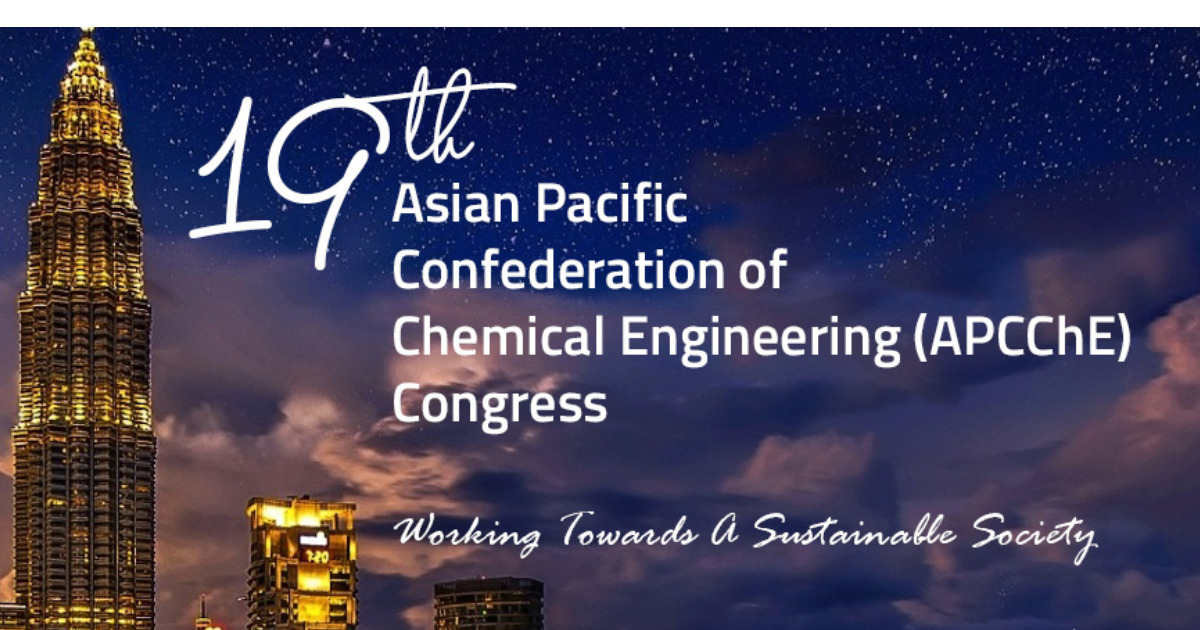Working toward a Sustainable Society—Selected Papers from APCCHE2022 Conference
A special issue of Processes (ISSN 2227-9717). This special issue belongs to the section "Chemical Processes and Systems".
Deadline for manuscript submissions: closed (30 June 2023) | Viewed by 25058

Special Issue Editors
Interests: adsorption; modeling and simulation; biofuel; environmental engineering; circular economy
Special Issues, Collections and Topics in MDPI journals
Interests: oil and gas processing; flow assurance in fluid transport; technoeconomic analysis of processes; safety and policies on green energy
Special Issue Information
Dear Colleagues,
The Asian Pacific Confederation of Chemical Engineering (APCChE) was founded in 1975. It was formed to provide a focus for various non-profit societies, associations, and institutions working in the field of Chemical Engineering in the Asia Pacific region. APCChE 2022 provides a unique platform for R&D experts, professional chemical engineers, academicians, and students especially from the Asia Pacific region and from all over the world to exchange their ideas and expertise and foster collaborations in research. Aiming to close the gap of engineering knowledge in this vast and dynamic era, the participants can enhance their knowledge and skills toward implementing environmental friendly energy, achieving one of the Sustainable Development Goals (SDG) of the 2030 agenda to control climate change on Earth while developing new technology. This Special Issue covers research on adopting chemical engineering knowledge to address various aspects pertaining to sustainability and the circular economy.
All the authors of accepted contributions at APCChE 2022 with topics related to sustainable developments are invited to submit manuscripts to Processes in the Special Issue on “Working toward a Sustainable Society—Selected Papers from APCCHE2022 Conference”.
Prof. Dr. Thomas Shean-Yaw Choong
Dr. Hazlina Husin
Guest Editors
Manuscript Submission Information
Manuscripts should be submitted online at www.mdpi.com by registering and logging in to this website. Once you are registered, click here to go to the submission form. Manuscripts can be submitted until the deadline. All submissions that pass pre-check are peer-reviewed. Accepted papers will be published continuously in the journal (as soon as accepted) and will be listed together on the special issue website. Research articles, review articles as well as short communications are invited. For planned papers, a title and short abstract (about 250 words) can be sent to the Editorial Office for assessment.
Submitted manuscripts should not have been published previously, nor be under consideration for publication elsewhere (except conference proceedings papers). All manuscripts are thoroughly refereed through a single-blind peer-review process. A guide for authors and other relevant information for submission of manuscripts is available on the Instructions for Authors page. Processes is an international peer-reviewed open access semimonthly journal published by MDPI.
Please visit the Instructions for Authors page before submitting a manuscript. The Article Processing Charge (APC) for publication in this open access journal is 2400 CHF (Swiss Francs). Submitted papers should be well formatted and use good English. Authors may use MDPI's English editing service prior to publication or during author revisions.
Keywords
- sustainability
- SDGs
- effective management
- processes
- green technology
- sustainable processes and technologies in chemical engineering
- green bioproducts, food, and bioprocessing
- new nanotechnology and advanced materials
- environmentally friendly waste treatment and management
- energetically sustainable
- resource-sustainable
- environmentally sustainable
- fiscally sustainable
- socially sustainable
Benefits of Publishing in a Special Issue
- Ease of navigation: Grouping papers by topic helps scholars navigate broad scope journals more efficiently.
- Greater discoverability: Special Issues support the reach and impact of scientific research. Articles in Special Issues are more discoverable and cited more frequently.
- Expansion of research network: Special Issues facilitate connections among authors, fostering scientific collaborations.
- External promotion: Articles in Special Issues are often promoted through the journal's social media, increasing their visibility.
- Reprint: MDPI Books provides the opportunity to republish successful Special Issues in book format, both online and in print.
Further information on MDPI's Special Issue policies can be found here.






